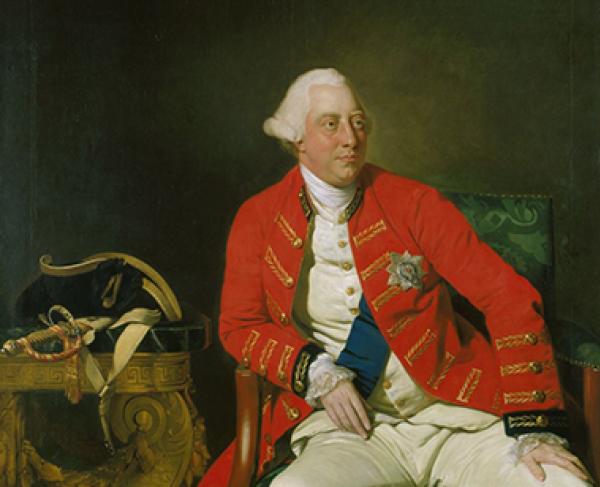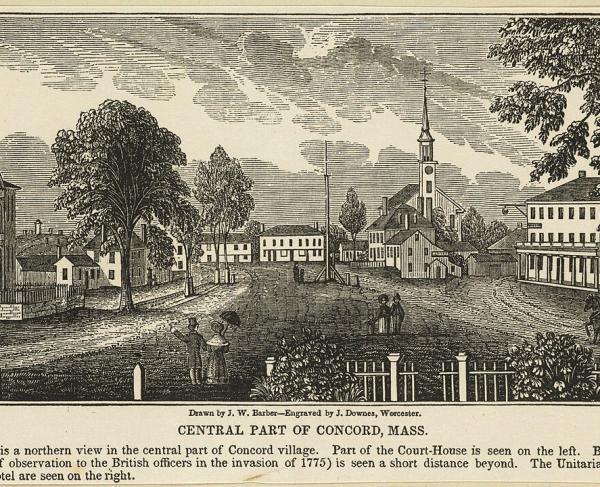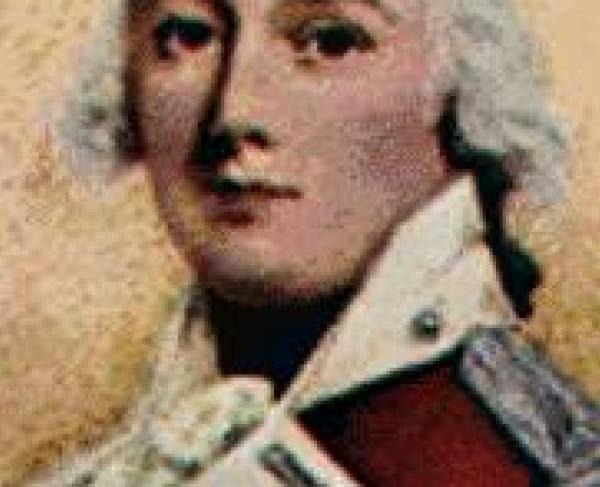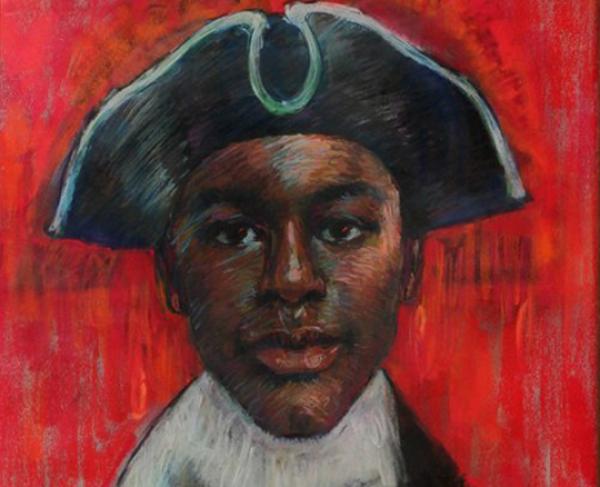King George III

As King of Great Britain during the American Revolution, George III has become to many Americans a byword for tyranny and the arrogance of the old European aristocracy. The popular musical Hamilton, for instance, portrays the King as a vain figure. Others, meanwhile, have emphasized the mental illness he struggled with later in life, emblazoned in the public consciousness in films like The Madness of King George. But his life and current reputation in Britain, paints a portrait of a far more complicated figure. His 59-year reign was the longest in English history up to that point and remains surpassed only by those of his granddaughter Victoria and the current monarch Elizabeth II. The legacy of that reign, during which he presided over some of the most important events in world history, and George’s domestic life during it, remains a controversial yet fascinating subject for historians to this day.
Born as George William Frederick on June 4th, 1738, Prince George’s childhood began during a period of intense transition for both Great Britain as well as his own family. The dynasty, the House of Hanover, had ascended to the British throne upon the death of childless Queen Anne Stuart in 1714. All of Anne’s nearest relations, such as her half-brother James Francis Edward Stuart, were Roman Catholics, and few people in the mostly-Protestant Britain were able to stomach the thought of another Catholic King. Parliament therefore designated her second cousin George, Duke of Brunswick-Lüneburg, commonly known as Hanover, as Anne’s heir and he ascended to the throne as George I. As men of German extraction, George I and his son George II made great attempts to win over the British people by patronizing the arts and sciences. They also entrusted the day-to-day running of the Kingdom to Parliament and the civil government, but neither of them seemed to completely overcome the public’s suspicion of them. Seeing this, George II’s son, Frederick William, Prince of Wales, ensured that his own firstborn, George William Frederick, was born and raised in England, educated primarily in English (though he also learned German and French), and was brought up in the Anglican, rather than Lutheran, Church. As George III later told Parliament in a speech early on in his reign, “Born and Educated in this country, I glory in the name of Britain.” A shy child, partly as a result of his sheltered upbringing, George remained close to his parents, his mother in particular, and was devastated when his father passed away in 1751, leaving George to inherit the title Prince of Wales and the position of heir apparent to the British throne. Nine years later, King George II also died, leaving the new heir apparent to ascend to the throne as King George III at the age of 22. In order to secure an heir of his own, he married Princess Charlotte from the tiny German duchy of Mecklenburg-Strelitz. The Gold State Coach commissioned for the coronation and wedding (though not completed in time for either event) is actually still in use today and cost well over a million pounds in today’s money.
He also purchased a property for his new wife in London called Buckingham House for her private residence. Queen Victoria later used it as her own official London Residence, and Buckingham Palace has remained so for every British monarch since. The couple remained devoted to each other for the rest of their lives, and would have a total of fifteen children together (George in ’62, Frederick in ’63, William in ’65, Charlotte in ’66, Edward in ’67, Augusta Sophia in ’68, Elizabeth in ’70, Ernest Augustus in ’71, Augustus Frederick in ’73, Adolphus in ’74, Mary in ’76, Sophia in ’77, Octavius in ’79, Alfred in ’80, and Amelia in ’83), but marital bliss could only steady what became an utterly turbulent domestic life by so much.
Outside of the pomp and circumstance in Westminster Abbey where George received his crown on September 22nd, 1761, Great Britain itself was also in a state of turbulence, caught up in the Seven Years War that was ravaging Europe, North America, and South Asia. Following a successful invasion of Canada, the capture of many French-held islands in the Caribbean, and the victory at Plassey which marked the beginning of British domination over India, the Whig-dominated government enjoyed immense popular support. But George, fearing the burden that present and future expenditures might place upon the populace, advocated for making peace with opposing France, which put him at loggerheads with the far more bellicose minister William Pitt the Elder, who advocated a preemptive strike against neutral Spain based on intelligence reports of secret talks between them and France. To counter Pitt’s influence, George installed his friend and mentor the Earl of Bute, a member of the pro-aristocracy Tory Party, on the cabinet, forcing out Pitt as well as the Prime Minister the Duke of Newcastle. Before George and Bute could negotiate a peace agreement, however, Pitt’s predictions ultimately proved accurate, as Spain entered the war as France’s ally, which forced Britain to expend even more resources and manpower to put down the threat. The next year, George and Bute successfully negotiated the Treaty of Paris in 1763, and though together they extracted significant territorial concessions from Spain and France, such as Canada and Florida, the peace proved immensely unpopular amongst the still-bellicose public, forcing Bute to resign shortly thereafter.
As he and his government dealt with the popular backlash at home, many of George’s policies sparked the revolt that became the next major conflict of his reign. In 1763, George issued a Royal Proclamation forbidding any European settlement in British territories west of the Appalachians in North America, partly as a concession to allied Native American groups like the Iroquois Confederacy who fought with Britain against France. Many American colonists who hoped to settle in the newly won territories protested, but King George had much more in store for them.
George also looked towards North America to pay off the enormous war debt that the crown had incurred. He shared this opinion with much of the English population, who felt that since the war started in North America, the English subjects living there should play a major role in paying for it. In 1765, the King’s newest Prime Minister, Lord George Grenville, introduced the Stamp Act, sparking a wave of protests in all thirteen colonies. The force and intensity of the protests shocked both the King and Parliament, forcing a repeal and causing an extended period of political instability, with multiple men serving as Prime Minister until settling on Lord Frederick North, who managed to stabilize the situation in 1770.
Though King and Parliament had been successfully cowed into repealing the Stamp Act, King George and Lord North stubbornly held on to the belief in their rights to tax the colonies. As both Patriots and Loyalists continuously escalated confrontation between the two factions, open conflict erupted at Lexington and Concord in April of 1775. In New York City, angry colonists tore down a gilded statue to the King ironically erected in his honor due to the repeal of the Stamp Act. Even the Declaration of Independence included no less than twenty-seven grievances addressed directly towards the King, showing how much he had become a symbol of tyranny to the colonists.
Ironically, during the course of the Revolutionary War, the King played little direct role in the war effort, but he remained invested all the same. He exhorted his military and civil government to stay firm their efforts to put down the rebellion, and uncompromising with the rebels’ goal of independence. He entrusted Lord North, with whom he regularly corresponded with, to give him constant updates about the state of the army and other news from the colonies. He may have been particularly influential in recruiting the mercenary army collectively called Hessians from six tiny German principalities, especially since several of said princes were his relatives. He was also almost directly affected, when the Continental Army Commander-in-Chief George Washington plotted to kidnap his son. The teenage Prince William Henry (the future King William IV) visited New York in the fall of 1781 while serving as a midshipman in the Royal Navy, where he temporarily held court as well. Knowing this, Washington approved a plan proposed by Colonel Matthias Ogden to send a group of men led by the colonel and sneak them into the city where they could break into the Prince’s residence, forcing him out at gunpoint if necessary, and ferrying him stealthily back to Continental-held territory all while evading the hundreds of British and Hessian troops patrolling the streets. Washington later abandoned the plan in March of 1782 when he learned that British intelligence got wind of the plot and doubled the Prince’s guard.
King George was ultimately crushed to learn that the he had ultimately lost the war to the Americans, writing at an imprecise date, “America is lost! Must we fall beneath the blow?” Though some historians accused the King of obstinance in the face of the rightful American cause, he was perfectly justified to fear for the cohesion of the Empire, upon which almost all of British prosperity depended. Still, after accepting the humiliation of defeat, he quickly turned his mind to plans to mitigate the damage. In the same letter as before, he also reasons that, apart from the tobacco exports, British control of the Thirteen Colonies ultimately came at a financial loss, writing, “it is to be hoped we shall reap more advantages from their trade as friends than ever we could derive from them as Colonies,” and that Britain could maintain its far more profitable holdings in the Caribbean and India so long as it maintains its formidable Navy. When he met American diplomat and Founding Father John Adams in 1785, two years after the war ended, he reportedly told him, “I was the last to consent to the separation; but the separation having been made and having become inevitable, I have always said, as I say, that I would be the first to meet the friendship of the United States as an independent power.”
Despite his resignation to defeat, the loss of the colonies led to yet another period of political instability in Britain that required immediate attention. The government that negotiated the 1783 Treaty of Paris rested upon a tenuous alliance between the King’s friend Lord North and a fiercely radical Whig named Charles James Fox whom the King hated and openly supported the American cause. This alliance immediately collapsed after ratification, leaving the King to find someone to properly sail the ship of state. On December 19th, 1783, he finally settled upon the son and namesake of his old rival William Pitt, often referred to as William Pitt the Younger. The King’s choice was later affirmed by a subsequent general election, giving the King a brief period of popularity, and Pitt himself went on to dominate British politics for the next two decades, but this period of respite was ended by King George’s first major bout of the illness that later forced him from rule.
Given the still crude state of medical knowledge in the 18th century, we cannot be sure exactly what disease afflicted the King, but a modern diagnosis suggests a range of possible culprits: bipolar disorder, for example, or perhaps a genetic blood disease called Porphyria that attacks the nervous system. George himself often claimed that it was the result of the pressures of rule combined with the turbulences of his domestic life, both of which he had plenty. Regardless of the cause, the first major attack happened in the year 1788, a few years after his two youngest sons both died in infancy. Beginning in the summer of that year and lasting until February of 1789, the King was utterly incapacitated, prone to manic episodes and bizarre outbursts. During his recuperation, Charles Fox successfully pressured Prime Minister Pitt into passing a bill in the House of Commons to force the King into retirement and install his eldest son, George, as regent, but the House of Lords stalled the bill long enough for the King to recover. This was not the end to the question of regency, however.
No sooner did the King’s mind recover than did all of Europe explode with the onset of the French Revolution in 1789, and all the political upheaval and years of military conflict that came with it. Despite the old Kingdom of France’s longtime status as Britain’s longtime rival, the Revolution that overthrew the Bourbon Dynasty posed more of an existential threat to the established social order in Europe than the American one ever did, and following King Louis XVI’s execution in 1793, Britain quickly entered into a coalition to suppress the nascent Republic and restore the Bourbons. To everyone’s shock, however, the French Republic proved utterly resilient on the battlefield, in complete spite of the chaos rocking Paris during the Reign of Terror. By the end of the War of the First Coalition in 1797, only Great Britain remained standing among the coalition partners, as King George and William Pitt proved equally dogged opponents. The following War of the Second Coalition, which saw the rise of Napoleon Bonaparte to power and a failed French invasion of England, produced a similar result, thanks mostly to the superiority of the British Navy. Obviously it was the Prime Minister who directed most British military policy during the conflicts, but in the popular consciousness, the King remained a symbol of defiance against French militancy, as immortalized in many cartoons by James Gillray, where he often appears as a comical, but still quite affable figure putting villainous figures like Napoleon in their place.
During this time, Parliament also passed the 1800 Acts of Union, uniting the King’s traditionally autonomous realms of Great Britain and Ireland under a single state, creating the United Kingdom and among other things, creating Britain’s modern Union Flag. But despite all appearances of a united front, an issue tangentially related to the French Wars and unification caused a fatal rift between the King and his longtime partner Pitt the Younger. As the conflict dragged on, Pitt became concerned about certain appeals to the people of Ireland, most of whom were politically disenfranchised due to their Catholic religion and also made up a third of the soldiers in the British Army. In order to stave off a potentially disastrous mutiny or insurrection, Pitt put forward a bill in Parliament aimed to end all official discrimination against Catholics in civil life, but the King, upon learning of the bill, would have none of it. In his eyes, Catholic Emancipation, as the issue came to be called, was a direct violation of his coronation oath to uphold the Protestant religion as well as his position as head of the Church of England. Without his Royal Assent, Pitt’s bill failed and his decades-long tenure as Prime Minister came to an end. It was King George’s last active political decision.
After the initial debilitation in 1788, King George continued to periodically struggle with his illness until 1810, when it returned with a vengeance. Historians blame the trigger event for this most recent bout of madness on the death of the King’s beloved youngest daughter, Princess Amelia, that same year at the age of 27. Recognizing the King’s utter inability to carry out his official duties, Parliament swiftly passed the 1811 Regency Act, giving his eldest son George, Prince of Wales authority to carry out the Crown’s duties for the next nine years as Prince-Regent. During this period, the United Kingdom went through several important advancements in the economy, politics, and the arts and sciences. The War of 1812 began and ended during this period, making George III monarch of Great Britain during both of its major conflicts with the United States. The Napoleonic threat also ended at the 1815 Battle of Waterloo, turning the victorious Arthur Wellesley, the Duke of Wellington, into an international icon. Regency England, as it came to be known, became a byword for both elegance and excess, fitting the personality of Prince George himself. The King, however, was barely lucid enough to take notice of any of it. While his realm prospered economically and basked in military glory, the King lived an entirely secluded life in Windsor Castle. Blind, deaf and in constant pain, George was almost oblivious to anything around him, including the death of Queen Charlotte in 1818. A contemporary engraving by portrait painter Henry Meyer depicts him with unkempt hair and a long beard, a lasting testimony to his derangement. His struggles only ended when he passed away on January 29th, 1820, ending the regency as his son ascended to the throne as George IV. His body was interred in St. George’s Chapel at Windsor Castle.
The loss of America and the madness that ended his life has permanently altered the perception of King George III in popular memory, but neither of these tell the complete story of his life. As a statesman, King George was well-liked by the public including in America even as they poked fun at his eccentricities and respected by most of Parliament. As a patron, he enthusiastically supported technological advancement during the first few years of the Industrial Revolution. And as monarch, he made himself into an effective figure of national resistance against the threat of Napoleon Bonaparte. Most importantly, George’s style of rule, favoring background stability and trusting Parliament to decide on most policy, provided an important precedent for his successors. As historian Lucy Worsley writes in a 2013 piece for the BBC, “In a prosperous, industrialising (sic) Britain, it was growing more important for a monarch to reign rather than rule.” George III was many things, but “tyrant” does not even remotely describe him.
Related Battles
93
300


